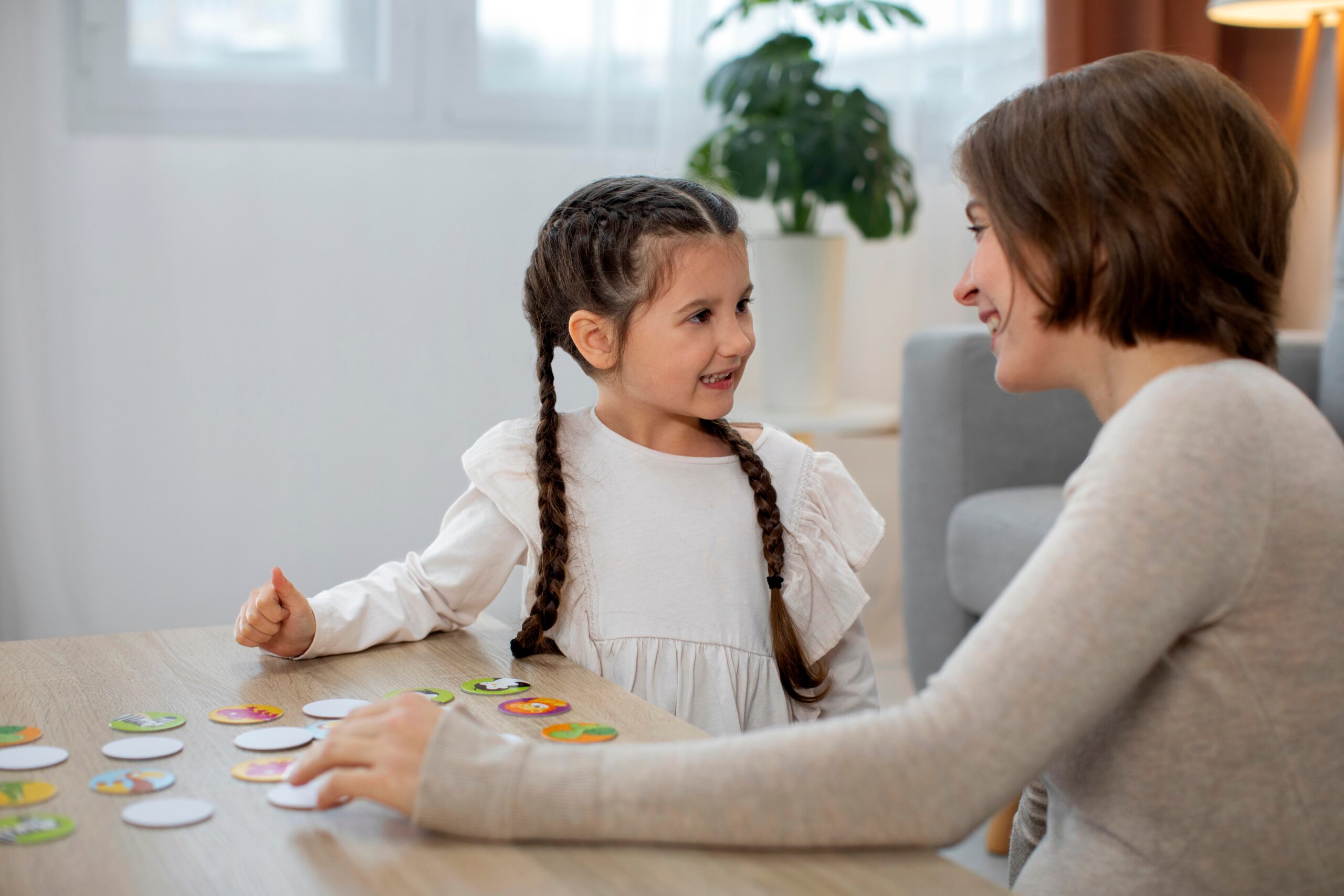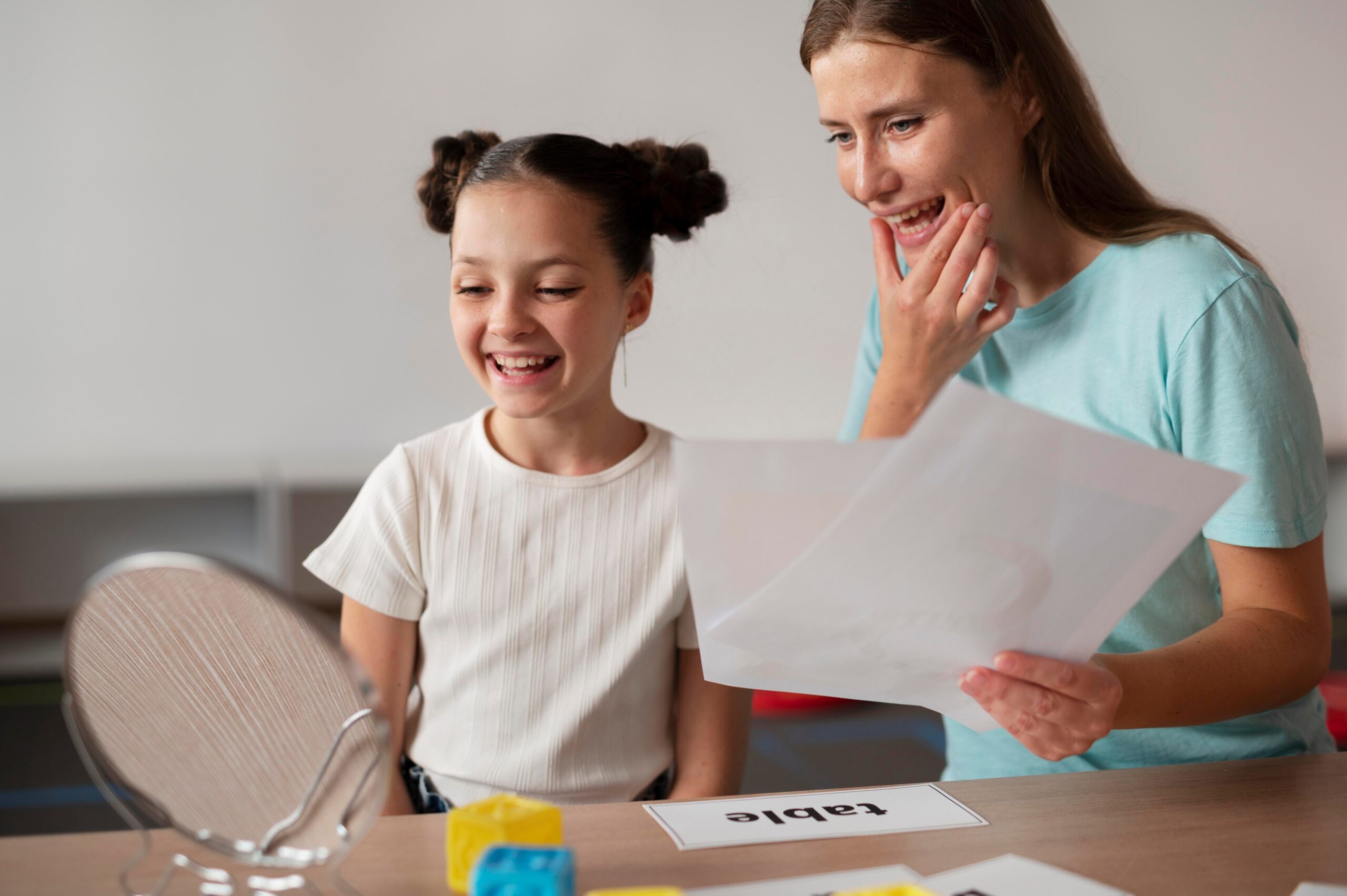Key Points:
- ABA therapy uses evidence-based techniques like prompting and reinforcement to encourage language development.
- Therapy settings, like in-home ABA, telehealth, or ABA at school, can be customized to match a child’s communication needs.
- Parental involvement and speech support are critical in reinforcing communication skills beyond therapy sessions.
When your child struggles to express themselves, even simple daily routines can become overwhelming. As a parent or caregiver of a child with autism, you’re likely searching for more than just answers. You’re looking for tools, support, and progress. One of the most well-established approaches for building communication skills in children with autism is Applied Behavior Analysis (ABA) therapy.
This article breaks down five specific ways ABA helps develop communication skills. Whether your child is non-verbal, using limited speech, or facing difficulties with social interactions, you’ll find practical insight into how ABA Therapy supports meaningful language growth, both verbal and non-verbal.
Let’s explore how ABA works, what techniques are commonly used, and how different therapy formats can support your child’s unique needs.
1. Reinforcing Communication Through Positive Outcomes
ABA Therapy is rooted in behavior science, which means one of its foundational tools is positive reinforcement. In building communication skills, this is a powerful concept.
If a child uses a word, gesture, or communication device correctly, even once, ABA therapists reinforce that effort immediately. This might be in the form of a preferred toy, a snack, or praise, depending on what motivates the child.
The goal is simple: to make communication rewarding, so the child is more likely to try again.
This approach is particularly effective when delivered consistently across settings, whether at an Applied Behavior Analysis center, during in-home ABA therapy, or through ABA Therapy at school.
Parents and caregivers also learn to apply this method at home, through parent training ABA, ensuring communication practice isn’t limited to therapy sessions.
2. Teaching Functional Communication Skills
One of the most common reasons children with autism become frustrated is the inability to get their needs met. Functional Communication Training (FCT), a core ABA method, focuses on helping children express those needs appropriately.
This might include:
- Teaching a child to say or sign “help” instead of crying.
- Using picture exchange systems (PECS) to request a favorite item.
- Building one-word requests into full sentences over time.
What makes this effective is that communication is tied directly to real-life needs. It’s practical, not abstract.
Whether the child is verbal or non-verbal, the ABA therapist assesses what kind of communication skill is most functional for that individual child. In some cases, speech support from an SLP may be integrated into the ABA plan.
This teamwork is especially helpful when working with providers like an applied behavior center for autism, where interdisciplinary care is often coordinated.
 3. Prompting and Fading: Encouraging Independence
3. Prompting and Fading: Encouraging Independence
Prompting is a core ABA strategy where the therapist offers support to help a child complete a communication task. This could be a verbal prompt (“Say ‘more’”), a gesture, or even a model of the expected behavior.
But the ultimate goal is independence. So, ABA therapists also use a technique called fading, gradually reducing prompts so the child starts to initiate communication on their own.
This structured method helps reduce frustration and builds confidence in communication.
You’ll see this in action whether you’re receiving telehealth ABA, online ABA, or in-person sessions. In every format, prompts are carefully adjusted to match the child’s current ability while still pushing toward progress.
4. Building Social Communication Through Structured Play
For many children with autism, social communication is just as challenging as verbal expression. ABA Therapy addresses this through structured play sessions, peer interaction, and role-playing scenarios.
Therapists might model appropriate greetings, eye contact, turn-taking, or conversation starters. Then they guide the child through the interaction, reinforcing attempts and gently correcting breakdowns.
This work is crucial for preparing children for success in school, group activities, or everyday community interactions.
When delivered in a group setting at an Applied Behavior Analysis center or through structured sessions in ABA Therapy at school, children often benefit from real-time social practice with peers.
Even in in-home ABA therapy, therapists may incorporate sibling play or virtual peer sessions, depending on the child’s goals.
 5. Supporting Caregivers to Extend Communication Practice
5. Supporting Caregivers to Extend Communication Practice
Parents and caregivers are a child’s most consistent communication partners. That’s why parent training ABA is an essential part of any communication-focused plan.
Therapists don’t just work with the child. They actively coach parents on how to:
- Recognize and respond to communication attempts.
- Create communication-rich routines at home.
- Avoid reinforcing challenging behaviors that stem from communication breakdowns.
This consistency boosts learning. When a child practices their communication skill in therapy and then applies it at the dinner table, during bath time, or at the park – that’s when true progress happens.
Many ABA providers now offer telehealth ABA or online ABA sessions for parent training, making it easier for families to stay engaged, even with a busy schedule.
If you’re searching for ABA services near me, be sure to ask how much caregiver involvement is included, because your role is key to your child’s communication success.
A Communication Bridge, Not Just a Program
ABA Therapy doesn’t just teach vocabulary or gestures. It builds a bridge between your child’s thoughts and the outside world. Every prompt, reinforcement, and teaching opportunity is a step toward more independent, confident expression.
Whether your child is just beginning to use visuals, trying to form sentences, or working on social conversations, the principles of ABA can be adapted to meet them where they are.
From sessions at an applied behavior center for autism to ABA Therapy at school, or even in-home ABA therapy, the common thread is individualized support aimed at opening up a world of communication for your child.
At Acclimate ABA, we specialize in providing ABA Therapy in Utah with a strong focus on building real-world communication skills for children with autism.
Whether you’re looking for center-based services, in-home ABA therapy, or convenient telehealth ABA options, Acclimate ABA is here to walk with you. We also offer parent training ABA so you can feel confident supporting your child beyond therapy sessions.
Searching for ABA services near me? Discover how ABA Therapy can transform your child’s ability to connect with the world. Contact us today to learn more about our personalized ABA Therapy in Utah and get started on your child’s communication journey.

